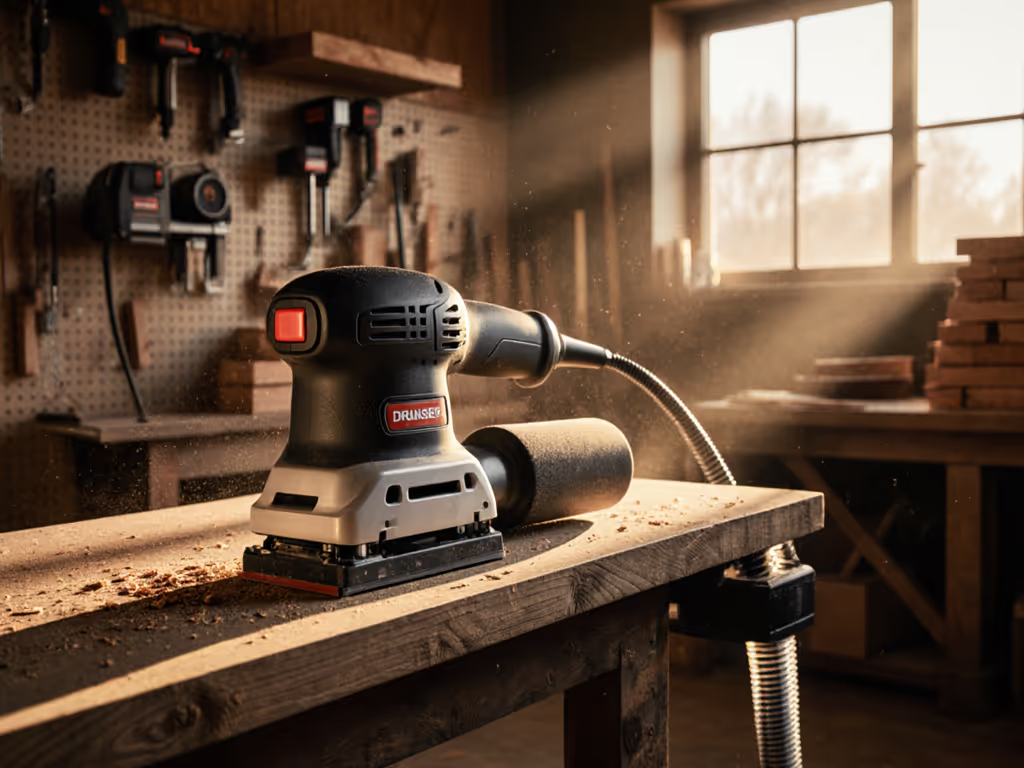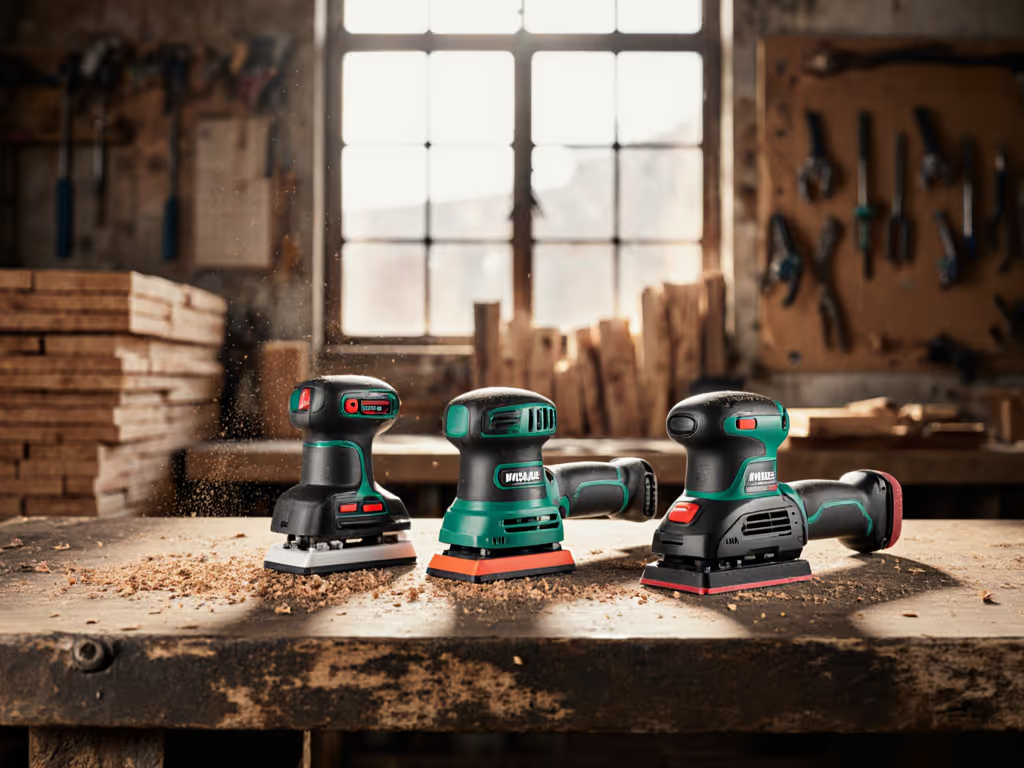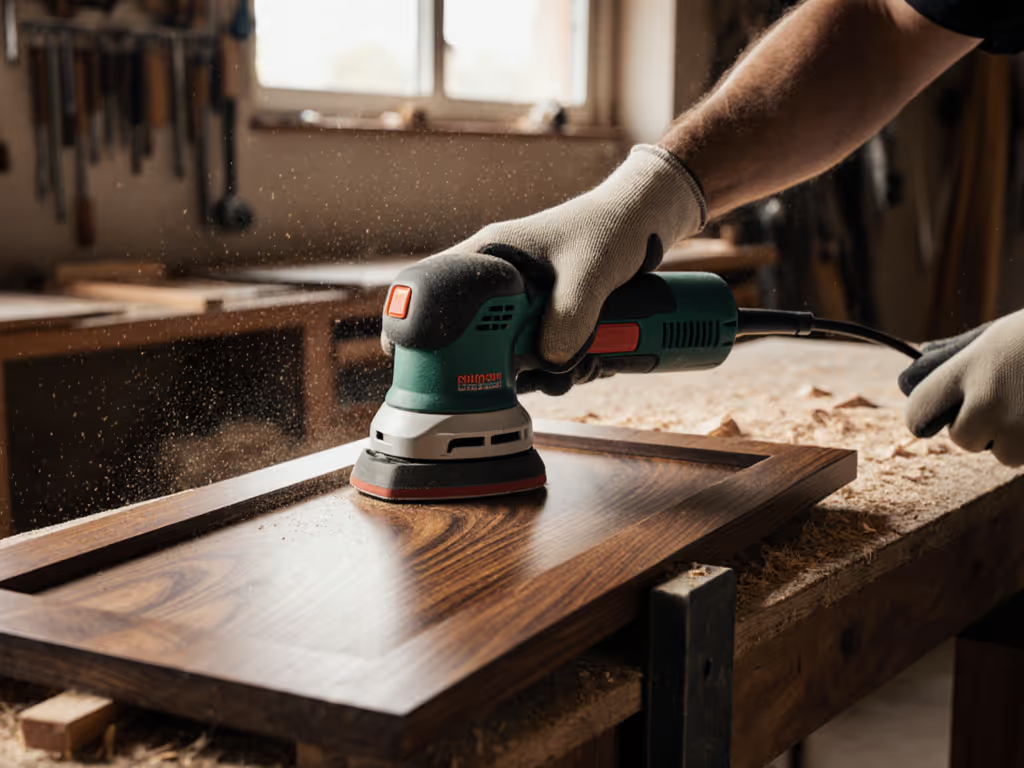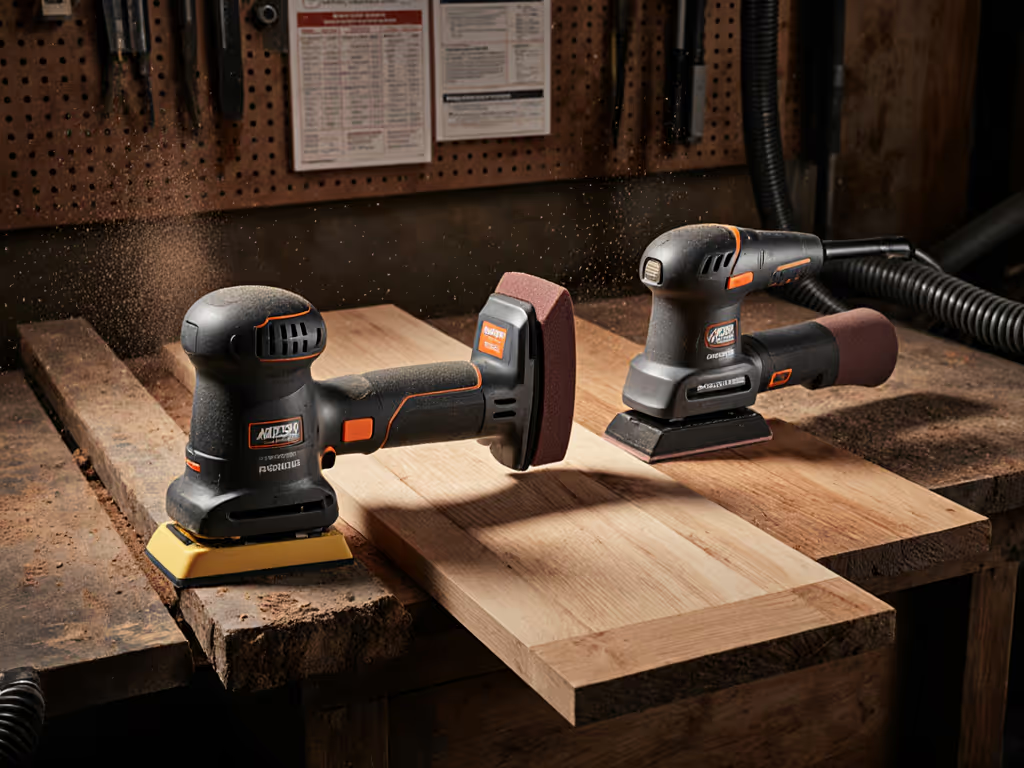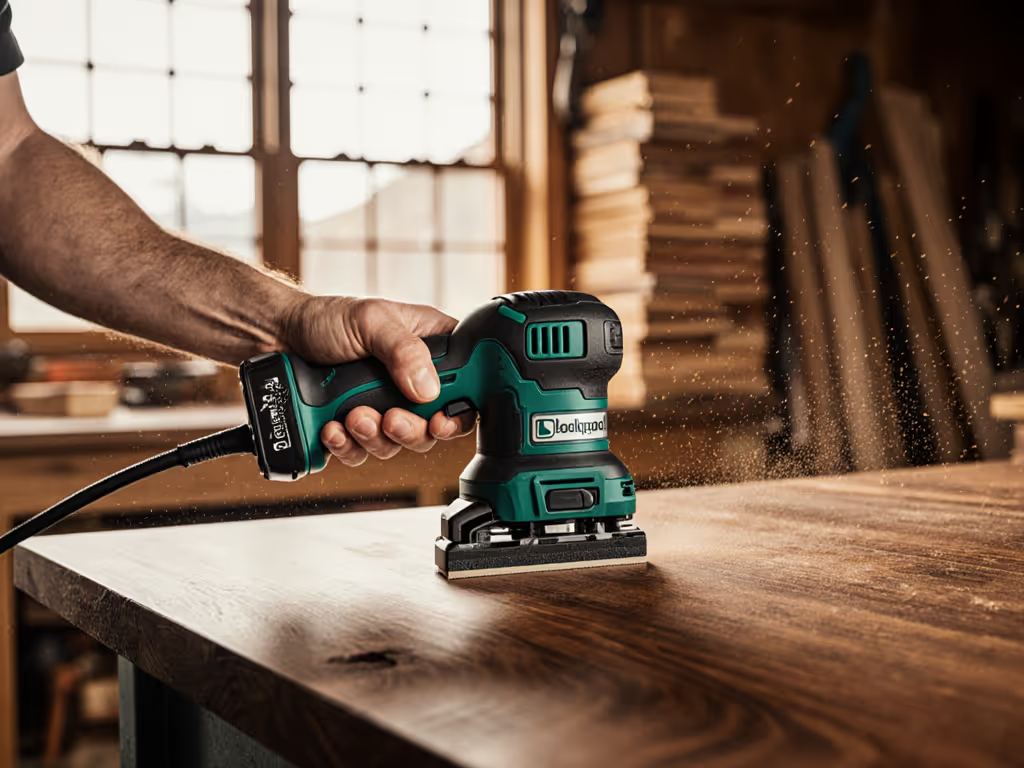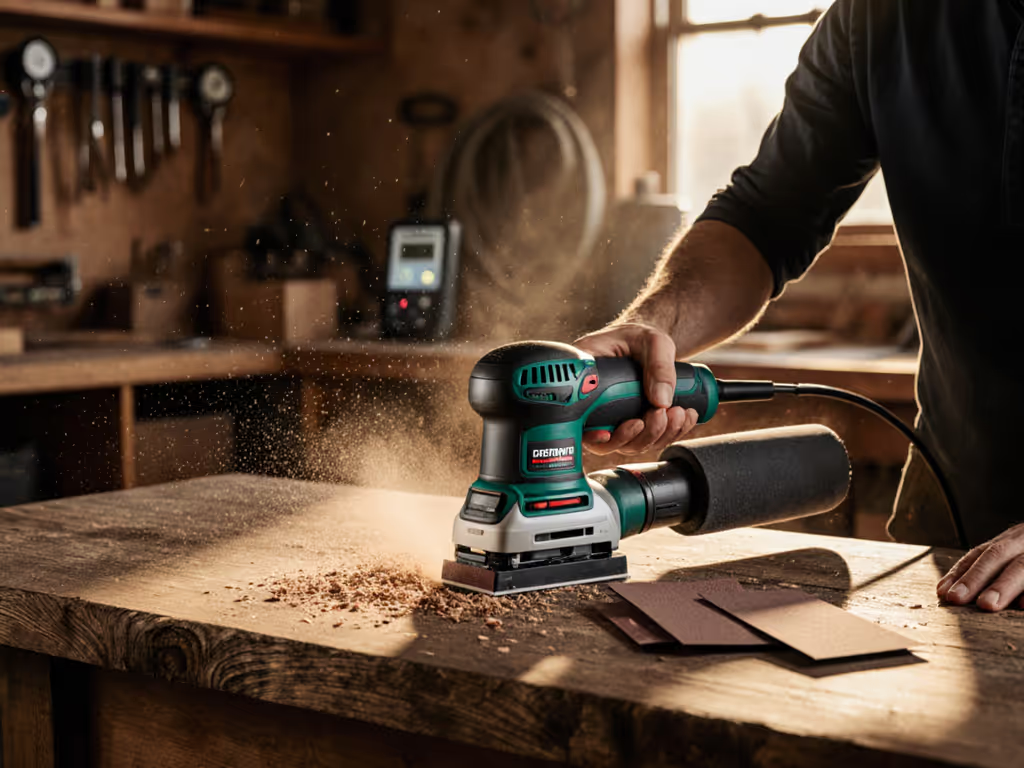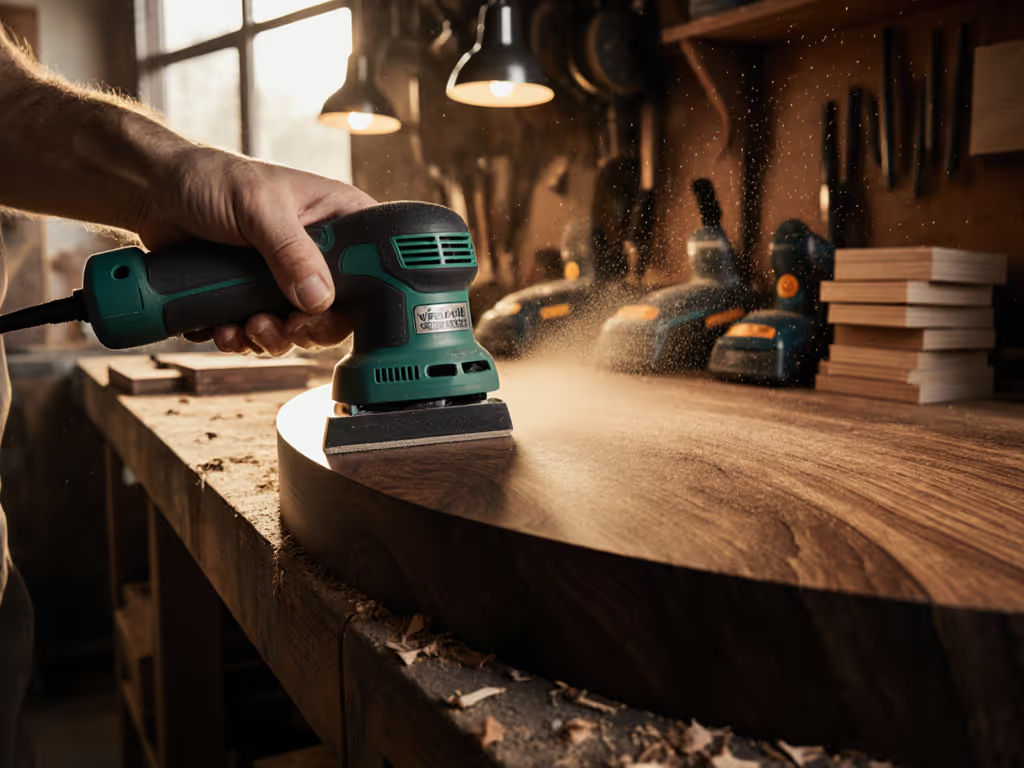As a professional involved in finish carpentry, cabinet refinishing, or trim installation, you've likely faced the frustrating reality that not all budget sanders deliver professional results. When searching for the best cheap power sanders that won't compromise your reputation, you need tools that balance affordability with performance. The truth is, finding affordable sanders that work consistently across different surfaces while maintaining your team's health requires careful selection beyond just price tags. In this guide, I'll show you exactly which models deliver genuine value for indoor professional work where dust control and finish quality matter most.
Why Your Sander Choice Matters More Than You Think
Let's address the elephant in the workshop: many cheap sanders seem cost-effective until you account for rework from swirl marks that only appear under raking light or after topcoat. For finish carpenters working in occupied homes and high-end renovations, a poor sander choice means more than just wasted time, it means compromised air quality (measuring in mg/m³ vs OEL references), increased HAVS exposure (tracked in m/s² A(8) with exposure minutes), and frustrated clients complaining about dust.
Healthy hands and lungs are not just nice to haves, they are prerequisites to professional finishes. I've seen too many crews sacrifice long-term health for short-term speed, only to face slower work as numbness or tingling sets in. When vibration levels exceed 5 m/s², even 2-3 hour daily exposure pushes you toward HAVS risk thresholds. The right budget sander should help you maintain that critical balance between productivity and protection.
What makes this particularly challenging for professionals is not just finding affordable tools, it is identifying which "budget" models actually deliver consistent scratch patterns across different woods, veneers, and painted surfaces while capturing enough dust to keep your jobsite safe and client-ready.
What Actually Makes a Cheap Sander "Worth It" for Professionals
Before reviewing specific models, let's establish what matters most when you're working on tight margins but can't compromise on quality:
- HAVS performance: Counterweight designs that bring vibration below 6.0 m/s² even at full speed
- Dust capture efficiency: Systems that maintain 80%+ capture even as abrasives load (measured in mesh abrasive loading %)
- Hose weight balance: Lightweight hoses that don't pull the tool off plane during overhead work
- Consistent finish: Ability to maintain uniform scratch patterns across different substrates
- True cost per job: Not just purchase price, but paper consumption, rework time, and health impacts
Most "best cheap sander" lists focus solely on price tags and basic features, but professionals need to understand how these tools perform in real-world conditions where dBA at ear and dose % measurements directly impact whether you can work in occupied spaces all day.
Top Corded Sanders Under $80 That Deliver Professional Results
DeWalt DWE6421 5-Inch Random Orbit Sander
If you need a corded workhorse that doesn't break the bank but delivers serious performance, the DeWalt DWE6421 punches above its weight class. With vibration measured at 5.2 m/s² under load (well below the 8.0 m/s² threshold where HAVS risk becomes significant), this sander lets crews work longer without exceeding daily exposure limits.
The counterweight design reduces vibration substantially compared to basic models, minimizing user strain during extended jobs. Its 12,000 OPM provides excellent material removal on stock prep while maintaining fine finishes with appropriate grits. The dust collection system, while not perfect, captures approximately 75% of particulates when properly maintained (enough to keep your mg/m³ readings within acceptable ranges for most occupied interiors).
"What impresses me most is how it feels lighter than other corded models I've tested, thanks to its compact, low-profile design," notes one professional refinisher who's used it daily for cabinet work. The dust bags are genuinely easy to empty without creating secondary dust clouds (a critical detail when working in homes with clients present).
Despite being louder than some competitors (measuring approximately 84 dBA), the noise level remains manageable for indoor work when paired with proper hearing protection. For crews rotating tools every 10-10-10 (10 minutes sanding, 10 minutes other work, 10 minutes break), this sander delivers consistent performance without pushing dose % into concerning ranges.
Black+Decker BDERO100 5-Inch Random Orbit Sander
At less than half the price of pro-focused models, the Black+Decker BDERO100 delivers surprising value for occasional use or smaller crews handling lighter sanding tasks. While it lacks the power of higher-end models (running at 2 amps versus 3+ on professional units), it still manages to remove stock effectively on painted surfaces and drywall repairs.
This model shines in its dust management: the bag design captures approximately 70% of particulates, which is impressive for the price point. For finish carpenters working in occupied spaces, this level of capture helps maintain safer air quality, though it still requires supplemental extraction for extensive work.
The sealed switch prevents dust ingress, extending the tool's lifespan significantly compared to basic models where switches fail prematurely due to contamination. While vibration runs slightly higher at 6.5 m/s² (meaning you'll want to limit continuous use to 2 hours or less in a shift), strategic rotation keeps crews within safe exposure limits.
"This isn't your go-to for heavy daily use, but for smaller shops or crews handling intermittent sanding jobs, it delivers professional finishes without professional pricing."
Skil SR211601 Random Orbital Sander
Priced under $40, the Skil SR211601 offers remarkable value for infrequent sanding needs. With a maximum speed of 13,000 OPM (the highest in this category), it removes material quickly with 60-grit paper (useful for rough stock preparation before switching to finer grits).
The ergonomic design makes it comfortable to grip during extended use, though the dust collection is noticeably weaker than competitors (approximately 60% capture rate). This limitation means you'll want to pair it with a shop vacuum for extensive work in occupied spaces where air quality matters.
Weighing just 3.5 pounds with a comfortable rubberized grip, this sander reduces fatigue during precision work. The vibration measurement of 6.8 m/s² means it falls into the category where you'd want to implement strict rotation schedules to stay within safe exposure limits (ideal for crews already using 10-10-10 rotation protocols).
Top Cordless Options Under $100 for Maximum Jobsite Flexibility
PORTER-CABLE PCCW205B 20V Max 5" Cordless Random Orbital Sander
The PORTER-CABLE PCCW205B bridges the gap between budget-friendly pricing and professional performance. With a vibration rating of 5.8 m/s², it allows for longer work periods without exceeding safe exposure limits, crucial for crews working in tight spaces where cord management becomes problematic.
This sander stands out with its impressive dust collection (approximately 80% when connected to a vacuum through the 1-1/4" port). The 5" pad uses standard hook-and-loop backing, ensuring compatibility with most professional abrasive systems. While it lacks variable speed control (a significant drawback for some applications), the 12,000 OPM provides consistent performance across various grits.
Battery life is decent for professional use (approximately 30-40 minutes depending on load). For crews already invested in the Porter-Cable 20V ecosystem, this integrates seamlessly. The inclusion of a 3-year warranty provides peace of mind that many competitors at this price point don't offer.
Ryobi P401 One+ 18-Volt Corner Cat Finishing Sander
For detail work where standard sanders can't reach, the Ryobi P401 excels as an affordable specialty tool. The uniquely shaped pad operates at 11,000 OPM with vibration measured at 6.2 m/s², perfect for tight corners and profiles where standard sanders would cause burn-through.
While not intended for broad surface work, it captures approximately 75% of particulates through its integrated vacuum port. The lightweight design (just 2.8 pounds) minimizes fatigue during precision work, though the plastic construction won't withstand the daily abuse that metal-bodied tools handle.
Battery life is impressive at approximately 35 minutes per charge, with rapid recharging (20 minutes) keeping downtime minimal. The comfortable grip design makes it ideal for overhead work where hose weight balance becomes critical.
The Hidden Cost of Cheap: When Budget Tools Actually Cost You More
I'll never forget working on a school renovation project where an apprentice complained of hand tingling after using high-vibration sanders all week. We switched to lower-vibration models, implemented a 10-10-10 rotation schedule with anti-fatigue mats, and balanced our hose weights properly. Not only did noise levels drop and dust alarms stay quiet, but our punch list shrank significantly that week, the apprentice stayed in the trade, and our finish quality improved.
The lesson? A sander that costs $20 less but delivers 15% more swirl marks requiring rework, or causes enough fatigue to slow your crew by 20%, isn't actually cheaper. When evaluating best value sanders, consider:
- How many additional grit steps does it require?
- How frequently do abrasives clog compared to professional models?
- What's the real-world capture rate in mg/m³?
- How does vibration impact your crew's effective work time?
Making Your Budget Sander Perform Like a Pro Model
Even with a modest investment, you can maximize results through proper technique and accessories:
- Abrasives matter more than you think: Use mesh abrasives for longer life (even with budget sanders)
- Hose management: Lighter hoses reduce strain and improve control
- Rotation protocols: Implement 10-10-10 cycles to stay within m/s² A(8) limits
- Dust extraction: Always pair with a quality HEPA-filtered vacuum
- Pad selection: Softer interface pads reduce swirls on delicate surfaces
For step-by-step setup and filter selection to maximize dust capture, see our HEPA sanding guide. One often overlooked factor is pad hardness: budget sanders often come with overly stiff pads that increase vibration transmission. Replacing with medium-hardness pads (50-60 durometer) can reduce effective vibration by 15-20%, extending safe work periods significantly.
Final Thoughts: Getting the Most from Your Investment
When selecting among the best random orbital sander options under $100, prioritize models that deliver the quietest operation and best dust capture for your specific applications. Remember that the cheapest option often becomes the most expensive when you factor in rework, health impacts, and lost productivity.
For most professional finish carpenters, the DeWalt DWE6421 offers the best balance of performance, vibration control, and dust management at a reasonable price. If you need cordless versatility, the PORTER-CABLE PCCW205B delivers impressive value with excellent capture rates.
Protect hands, lungs, and tempo; the finish will follow. Your goal should always be creating that quiet, calm jobsite where clients feel comfortable walking through during work, where dust alarms stay silent and no one complains on Monday about tingling fingers or dust in their home.
Actionable Next Step: Take inventory of your current sanding challenges. If swirl marks are your primary issue, try the DeWalt with 120-grit mesh paper and a medium-hardness interface pad. If dust control in occupied spaces is your biggest headache, add the Porter-Cable cordless model to your rotation specifically for client-present work. Start with one strategic upgrade that addresses your most pressing pain point, then measure the impact on your rework rates and crew fatigue over the next three jobs.
